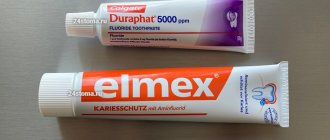Inhalation is an excellent way to treat respiratory diseases. For a simple procedure, convenient home medicine devices have been invented - inhalers or, in other words, nebulizers. Let's talk about their features.
- How does inhalation work?
- Types of inhalers-nebulizers
- How to choose an inhaler
- Popular brands
Inhalation is useful both for the treatment and prevention of diseases of the respiratory system. This is an effective way to deliver medications directly to the upper and lower respiratory tract.
What is a nebulizer?
A nebulizer is a device for aerosol therapy, in other words, for inhalation. With its help, the medicine is broken down into very small particles suspended in the air, which penetrate the respiratory tract with the help of steam when inhaled from a nebulizer. The nebulizer can be used by people of any age - from newborns to the elderly, both at home and in the hospital.
A nebulizer is used for respiratory diseases. It is most often used to treat bronchial asthma and chronic obstructive pulmonary disease (COPD), as it is the most effective way to deliver drugs directly to the bronchi.
Nebulizer therapy promotes:
- reducing bronchospasm
- improving the drainage function of the respiratory tract
- sanitation of the upper respiratory tract and bronchial tree
- reducing swelling of the mucous membrane
- reducing the inflammatory process
- influence on local immune reactions
- improvement of microcirculation
- protection of mucous membranes from allergens and industrial aerosols
How does the inhaler work?
Inhalation treatment is based on inhalation of a therapeutic or prophylactic drug in the state of an aerosol or vapor.
Depending on the technology, there are 4 types of inhalers: steam inhaler, compressor, ultrasonic inhaler, devices with mesh technology.
- Steam inhaler - heats the drug to a gaseous state, destroys some types of drugs. Steam particles penetrate only into the upper respiratory tract.
- Compressor inhaler - the main element in it is a compressor that pumps air under high pressure. This is the most widespread and safe technology.
- In an ultrasonic inhaler, the liquid is split into an aerosol under the influence of ultrasound.
- A mesh inhaler passes the medicine through a mesh with tiny holes to create an aerosol. In this case, the drug is not destroyed, since the vibrations are directed at the mesh and not at the medicine.
What liquids can be used?
The first thing that is necessary for the nebulizer to work is an isotonic solution. This is a solution whose osmotic pressure is equal to the osmotic pressure of blood plasma.
If the medicine needs to be diluted, then for this purpose you need to use saline solution and only that. Not mineral water, not distilled, not homemade saline solution, not herbal decoctions. Only STERILE saline solution.
You can never be sure that mineral water, distilled water, homemade saline solution, or other similar liquids are sterile. There is no guarantee that these liquids do not contain harmful microorganisms or bacteria.
The second component for nebulizer inhalation is medications. Medicines are selected only by the attending physician; no need to self-medicate!
What medications can be used:
- Bronchodilators - narrow the airways, making breathing easier.
- Corticosteroids – reduce the activity of inflammation in the respiratory tract.
- Prostanoids - increase the flow of blood and oxygen to damaged areas of the lungs.
How to use an inhaler for a child
Children should only use the inhaler under adult supervision. It happens that not every child can sit quietly for 15–20 minutes during the procedure. And parents of such children know how difficult it is to sit their child down and convince him to calmly breathe into a mask.
We have collected tips that will help you carry out the treatment calmly.
- Take inhalations at the same time every day so that they become part of your routine. This way the child will get used to it and be less capricious.
- Come up with a special name for the treatment time. And think about how to distract your child - you can read a book, turn on your favorite song, get toys.
- Together, stick stickers on the nebulizer so that the child has a pleasant association with the device.
- Let your child turn the device on and off and put on the mask themselves.
- Praise or give small gifts after the procedure because the child sat calmly and helped you.
An adult should assemble the inhaler, fill in the medicine, and wash the components so as not to damage the device and for the procedure to be effective.
This is important to know!
- Inhalation of substances with a pungent odor can cause spasm of the small bronchi, as well as laryngospasm, in children under 5 years of age. This happens due to the special structure of the respiratory tract in children.
- Vapors from herbs are a strong allergen and can cause severe allergic reactions, accompanied by severe breathing problems.
- Inhalation of hot steam is prohibited in pediatrics, as it can cause burns to the respiratory tract.
- Inhalation of eucalyptus vapors and other similar oils is not related to the treatment of ARVI.
- Essential oils cannot be used for inhalation with hot steam, much less pour them into a nebulizer. At a minimum, because the liquid is crushed into tiny particles that penetrate into the farthest parts of the respiratory tract. At most, because this is an oil that, due to splitting into small particles, can settle on the surface of the bronchi in an even film, thereby causing mechanical blockage, which will lead to swelling of the lungs, the impossibility of gas exchange in them and death before the ambulance arrives.
- Due to the insufficient development of the child’s respiratory muscles, a full cough impulse cannot be realized and expel excess fluid, including sputum. This means that inhalations CANNOT BE CARRIED OUT FOR PREVENTION.
- The nebulizer may cause respiratory irritation.
- A nebulizer does not treat cough or runny nose in uncomplicated ARVI. A nebulizer is a method of delivering medicine to the lower respiratory tract, since it is impossible to deliver medicine there by other means.
- The effect is not given by inhalation, but by the medicine that was poured into the nebulizer and which was delivered to the destination.
- If the device is not disinfected properly, inhalation will become a source of bacterial contamination and respiratory tract infections.
Inhalations are possible at any body temperature and only as prescribed by a doctor. If inhalation is performed on a child, then you can distract him with cartoons, books, toys during the procedure, and also perform inhalation in his sleep.
How to assemble a nebulizer chamber
Often, users of nebulizers have difficulties with the device - it can be difficult to assemble the chamber into which the medicine is poured. Let's look step by step at how to do this correctly, using the OMRON Comp Air NE-C24 inhaler as an example.
When you first open the nebulizer box, the chamber may be either assembled or disassembled. Let's consider the option when it is disassembled and show how to assemble it.
The nebulizer chamber consists of 4 elements.
- Reservoir for medicines.
- Bumper.
- Nebulizer chamber cover.
- Stub.
For the nebulizer to work correctly, it is necessary to place the bumper inside the tank - without it, the medicine will not turn into an aerosol, and inhalation will not make sense.
Once you have installed the baffle, pour the medicine into the reservoir, close the cap, and connect the air tube.
The reservoir is assembled. All that remains is to choose a suitable nozzle for inhalation: a mouthpiece, a mask for an adult or a child.
In OMRON inhalers, the bumper is placed on the cone-shaped element of the reservoir (nozzle).
Cough is a friend?!
A small amount of mucus is always produced in the respiratory tract, which is eliminated on its own unnoticed by us. When the airways become inflamed, the body produces much more mucus, which is needed to fight the infection. If there is too much mucus, a cough appears.
- A cough is needed so that excess mucus comes out of the lower respiratory tract and air can move freely from the nasopharynx to the lungs and back. Thanks to coughing, mucus does not fall lower into the lungs and cannot cause complications.
- Cough is not a disease! He doesn't need to be treated! A cough helps the body protect itself from complications, and all a parent can do is help the cough and influence its cause.
- If a cough appears, we look for the cause, and do not try to “drown out” the cough at any cost. There is no need to give your child “cough medicines” or conduct experiments using traditional methods.
- You need to help your cough; to do this, you need to create the necessary conditions under which the mucus will not dry out, thereby making it difficult to cough up. The necessary conditions for helping a cough are to water the child, humidify and cool the air in the room, bathe the child with snot, and walk in any weather if the child wants.
- Using a nebulizer for a cough, we are not trying to “drown it out”; with its help, we deliver medicine to the lower respiratory tract, thereby helping the cough do its job if necessary.
That is, a nebulizer is a method of delivering medications prescribed by a doctor to the lower respiratory tract. It cannot be used for prophylaxis; non-sterile liquids, homemade saline solutions, herbal decoctions and essential oils cannot be poured into it. There are indications for using a nebulizer; you cannot do inhalations just for the sake of it. Be healthy!
How does inhalation work?
There is a classic inhalation method. The basis of this process is heating water to the state of steam, which is used to treat inflamed areas of the throat. This purely physiotherapeutic principle is still used in steam inhalers. Modern methods used in nebulizers are aimed at supplying not just warm steam, but special medications. They work like this:
- the medicinal solution is poured into a special reservoir chamber;
- the inhaler converts liquid medicine into an aerosol, preserving its beneficial properties;
- it enters the tube and is inhaled through special nozzles for the mouth or nose;
- This is how the medicine, in the form of fine particles, enters the site of inflammation.
The use of the device allows you to reduce the dose of medication, making the treatment less aggressive and more gentle.
The nebulizer can be used by the whole family – even small children and infants. The optimal way to treat at home: without hospitalization or visiting a clinic for outpatient procedures.
Why do you need a nebulizer - 25 most important questions about inhalation
What is a nebulizer for?
The question is often asked: why do you need a device such as a nebulizer in your home medicine cabinet? Nowadays, colds, coughs, runny noses or the first signs of acute respiratory viral infections and bronchitis can be quickly and effectively dealt with using a nebulizer. It will help not only at the very beginning of the disease, but also in the stage of chronic exacerbation. This is a family device that can be used by both adults and children.
Especially, a nebulizer is necessary for those whose young children often suffer from colds and viral infections. After all, children’s immunity is not yet fully formed and needs support. Such a device is also always useful if a child does not want to have his throat and cold treated and cannot be persuaded. A nebulizer will come to the rescue in this case too. Procedures with him are easy and simple!
Do you need a nebulizer at home?
So, do you still need a nebulizer at home or can you do without it?
Recently, this smart home inhalation device has become very popular and in demand. Many people know about it from the words of their acquaintances or took it from friends in order to inhale it at home and quickly get rid of coughs, runny noses and colds.
Someone had only heard about a nebulizer, was interested in such a device, but had never used it. And as a rule, such people are often overcome by doubts: is it really necessary, is it worth buying, what is the use of it, and whether it will help.
How to choose the right nebulizer
What you need to know to choose the right nebulizer. After all, sometimes there are many questions to which you want to get reliable answers, not to make a mistake in your choice and to know exactly which nebulizer will be the most optimal and suitable for the whole family.
Therefore, in order to dispel all doubts and worries, we decided to write this article, where we will try to give answers to all frequently asked questions about this home device for coughs, runny nose and colds.
25 most frequently asked questions about nebulizers
What is nebulizer inhalation
Inhalation with a nebulizer is a procedure for treating the organs of the respiratory system using an aerosol, into which the drug is converted in a nebulizer.
What is an inhaler
An inhaler is a special device that converts medications into vapor and sends it directly to the respiratory system. Designed for inhalation at home.
What is a nebulizer
A nebulizer is a modern device that converts medications into a fine aerosol, “mist.” "Nebula" means fog. Designed for inhalation at home.
What are the differences between a nebulizer and an inhaler?
Indeed, how to understand the differences between a nebulizer and an inhaler.
An inhaler refers to all household appliances that are used at home to carry out inhalation procedures. But according to the rules, only those devices that produce steam are considered an inhaler. The rest are nebulizers.
Inhalers convert medicine into vapor through heat, i.e. high temperatures. They produce so-called “hot” steam. In this case, some of the healing properties are lost.
In nebulizers, the drug is converted into a fine aerosol, the so-called “cold” mist.
An aerosol from a medicine is formed under the influence of pressure, ultrasound or an electronic mesh membrane. At the same time, the effectiveness of the active substance of the drug remains from 90 to 99%, depending on the type of nebulizer.
What types of nebulizers are there?
Nebulizers come in several types.
Nebulizers differ in the type of aerosol formation and are: compressor, ultrasonic and mesh.
In nebulizers, the medicine is converted into an aerosol:
— under the influence of pressure in compressor inhalers;
- under the influence of ultrasound in ultrasonic;
- under the influence of an electronic mesh membrane in the mesh. At the same time, contact of ultrasound with the drug is completely excluded, which helps maintain the effectiveness of its therapeutic effect by 98 - 99%. Mesh is currently the most advanced technology.
Find out more about the main types of nebulizers, their disadvantages and advantages, and how they differ from the MESH nebulizer
Read the review…
How to choose a nebulizer
Indeed, how to choose the right nebulizer and what you need to pay attention to first.
These are the main characteristics that will help you make the right choice of nebulizer:
— Nebulizer type:
compressor, ultrasonic, mesh.
— Method for converting medicine into an aerosol
: pressure or compression, ultrasound, electronic mesh membrane Mesh.
Should be considered:
In Mesh inhalers, the medicine retains its greatest effectiveness at 98-99%.
For compressor engines it is from 70 to 95% depending on the type.
In ultrasound, hormonal and antibiotics completely lose their healing properties under the influence of ultrasound, so such drugs are not used in them.
- Power supply
: AC adapter 220/12 W, batteries.
The mobility of the nebulizer, the ability to take it with you and use it on the road, outside the home, depends on this.
— What is the particle size in the generated aerosol?
.
This affects the ability of particles to penetrate different parts of the respiratory system.
— Service life and operation of at least 3 years
- Noise level.
The noisiest compressors are from 60 dB, absolutely silent Mesh 25 dB.
— Availability of breathing masks:
adult, children's, mouthpiece.
The whole family can use this nebulizer: adults and children.
— In what position can inhalations be performed?
: sitting, lying down.
Only Mesh nebulizers allow inhalation while lying down.
- Weight.
Compressor ones are usually bulky and bulky, weighing 600-900 grams. depending on the model. The weight of the nebulizer mesh is less than 300 g.
All main technical parameters are usually presented in the “characteristics” section
What is the best particle size in a nebulizer?
The size of aerosol particles in a nebulizer is a very important technical characteristic.
The size of the particles determines which part of the respiratory tract the aerosol particles will enter, which means they will not only cure the disease, but also eliminate the source of its occurrence.
5 – 10 microns,
the largest ones reach only the upper respiratory tract.
An aerosol with such particles is effective for a runny nose, cough, and sore throat.
2 – 5 microns
, medium, enter the trachea, bronchi, middle sections of the respiratory system.
An aerosol with such particles is intended for the treatment of acute respiratory infections, acute respiratory viral infections, and bronchitis.
0.5 – 2 microns,
small, for the lower parts of the respiratory system, are able to penetrate the smallest capillaries and alveoli.
Particles of this size are able to penetrate into the lower respiratory tract, where the entire focus of the disease is concentrated, remove mucus, and eliminate the possibility of relapse and chronic exacerbation of the disease.
This is a very important factor to consider when choosing a nebulizer.
.
What is the difference between an ultrasonic and a mesh nebulizer?
The mesh inhaler is by far the most advanced and effective. In Mesh technology, the medicine does not heat up and is converted into an aerosol under the influence of vibrations of the electronic mesh membrane.
Mesh nebulizers produce an aerosol called “cold vapor.” In this case, ultrasound does not come into contact with the drug and does not affect the drug, so its effectiveness is completely preserved and is 98-99%. This provides the most reliable and fastest way to recovery with minimal medication consumption. Mesh nebulizers are very economical. It is very important.
Mesh inhalers use all types of medications, except oil ones.
In ultrasonic nebulizers, an aerosol is produced through direct contact of ultrasound and medication. Aerosol efficiency is 95-96%
You also need to know that antibiotics and hormonal drugs cannot be used in ultrasonic inhalers that do not have Mesh technology. They completely lose their properties under the influence of ultrasound.
What is the difference between a compressor nebulizer and a mesh nebulizer?
Compressor and Mesh nebulizers are the most popular models and differ in the way they produce an aerosol.
In compressor systems, an aerosol is produced through pressure and its effectiveness in treating respiratory diseases ranges from 95 to 98%. The widest range of medications is used, except for oil-based ones. Expensive models have a function that allows you to produce an aerosol with different dispersion (size) of particles for all parts of the respiratory system.
With the help of compressor nebulizers, inhalations can only be performed while sitting. They are large, bulky, work only from the mains, they cannot be taken with you on the road and are very noisy (noise level is more than 60 dB), which often frightens small children and they do not want to inhale.
In the Mesh nebulizer, an aerosol is produced by oscillations of the Mesh mesh membrane, while the effect of ultrasound on the medicine is completely eliminated. Therefore, the aerosol produced by Mesh nebulizers is the most effective: 98-99%.
The widest range of medications is also used, except for oil-based ones.
Inhalations using Mesh technology can be carried out while sitting or lying down, which is very important for infants, small children or bedridden patients.
Mesh nebulizers are small and compact, weighing no more than 300 grams. They work from the network, including in the car and from batteries. Absolutely silent, noise level 25 dB.
In addition, the Mesh inhaler has a removable container for medications. You can easily remove it and store the unused drug until your next inhalation.
Which nebulizer is suitable for travel?
For traveling with a child or the whole family, a mobile Mesh nebulizer is suitable. It runs on batteries, 220 and 12 W. You can always use it on the road, during travel, long journeys. It's silent. Making inhalations with it is easy and simple. It's only 300 grams, so the child can hold it in his hand. The inhalation procedure with it is absolutely safe. The nebulizer produces an aerosol of the “cold steam” type. The dimensions of the nebulizer are so compact that it can easily fit even into a handbag.
Which nebulizer is best for children
Most often, parents are faced with the following question: which nebulizer is better to choose for their child: compressor or Mesh. To avoid making a mistake in choosing a nebulizer, pay attention to the following features.
Compressor nebulizers make a lot of noise during operation. The noise level in them is over 60 dB. This is a feature of their design, but does not somewhat affect the quality of the procedures and their effectiveness. Sometimes this frightens young children and they are afraid to inhale. An electrical outlet is required for this procedure. The child is required to sit quietly during the procedure, and this can sometimes be difficult.
Mesh inhalers are optimal for children. Unlike the compressor Mesh inhaler, it is absolutely silent, quiet and does not frighten children with loud noise. They have a noise level of up to 25 dB. Therefore, inhalations with it can be safely given to infants or very young children.
The mesh is more versatile in its design. Small and compact. Easy and comfortable to hold, even for a child. Produces an aerosol - fog, without heating to high temperatures. Therefore, it is safe for children, and the possibility of accidentally getting burned is excluded.
Inhalations are carried out without using an electrical outlet. The child can hold it in his hand, while sitting, standing or lying down. The mesh inhaler operates both on mains power and on batteries. You can take it with you everywhere, use it on the road, on the train, in the car when traveling with a child, and quickly and effectively eliminate the first symptoms of a cold or cough.
We recommend choosing a Mesh nebulizer for your child.
Mesh inhaler (nebulizer) with a 38% discount!
Fast delivery within the Russian Federation for only 200 rubles! 12 month warranty. See description and reviews...
How many minutes does it take to inhale with a nebulizer?
Breathing with a nebulizer or doing inhalations with it is necessary according to the general recommendation for up to 10 minutes for children, up to 15 minutes for adults. In particularly severe forms of the disease, the time increases to 20 minutes.
Typically, the Mesh inhalation procedure with a nebulizer lasts up to 10 minutes. It turns itself off automatically after 10 minutes or after the medicine runs out.
Recommendations for children for inhalation with a nebulizer:
Up to 5 years: 2 -5 minutes
From 5 to 12 years: 5 -7 minutes
From 12 years: 5 – 10 minutes.
When inhaling Mesh with a nebulizer, the medicine may not be completely used up, since Mesh technology ensures very economical consumption of the drug.
The Mesh inhaler has a removable container. This allows you to store unused medicine in it for 2 - 3 days. Store the container only in the refrigerator.
13. How many times should you inhale with a nebulizer?
The doctor prescribes how many times to inhale with a nebulizer.
Standard frequency: 2 times a day, morning and evening.
You also need to know that eating is recommended 30 - 40 minutes before the procedure, and 40 - 60 minutes after.
Course for adults from 5 to 11 days; for children from 3 to 7 days.
What solution is needed for a nebulizer?
To carry out inhalations with a nebulizer, you need saline solution. This is a universal medicine: an aqueous solution of sodium chloride. This is an inexpensive but very effective disinfectant used in medicine.
It is recommended to use a syringe to take the medicine and maintain the dosage. It is recommended to prepare the medicinal solution: 1 ml of medicinal solution + 1 ml of saline solution (sodium chloride); 1 ml of alcohol tincture or syrup + 2-3 ml of saline solution (sodium chloride).
If there is no medicine available at home, then inhalation with a nebulizer can be carried out with one saline solution.
What to do with inhalation for a runny nose in a nebulizer
It is effective to inhale with a nebulizer when you have a runny nose, and the runny nose goes away in 2 to 3 days. This is the most effective way to treat runny nose in both children and adults. For this, a cold medicine + saline solution is used. You can also use just one saline solution for these purposes if there is no medicine.
Saline solution relieves swelling and inflammation, moisturizes mucous membranes, and has a disinfectant effect.
Medicines for inhalation with a nebulizer for a runny nose: antiviral drugs with a wide spectrum of action; antibacterial; pharmaceutical alcohol infusions of herbs.
It is recommended to prepare the medicinal solution: 1 ml of medicinal solution + 1 ml of saline solution (sodium chloride).
For a runny nose, do inhalations with a nebulizer: 2 times a day, for 5 - 7 days for children; adults 7 days.
Can you use a nebulizer during pregnancy?
A nebulizer is recommended during pregnancy and can be used. Only drugs for inhalation should be used strictly as prescribed by a doctor.
The mesh inhaler produces “cold” steam and this does not cause overheating of the expectant mother’s body, which is very important during pregnancy, so there are no obvious contraindications for its use.
The duration of the procedure should not exceed 8 minutes, 1 – 2 times a day, no more.
Inhalation with a nebulizer at a temperature
Inhalations with a nebulizer can be carried out if the patient’s temperature is not higher than 38.5 degrees. Above the specified temperature is not recommended. In infants, the temperature for inhalation with a nebulizer should not exceed 37.5 degrees.
Using a nebulizer for a severe cough
The use of inhalation with a nebulizer for cough has a high therapeutic effect and helps to quickly get rid of it and prevent complications that turn into bronchitis.
For dry cough, inhalation with a nebulizer: 3 - 4 times a day, for 5 -7 days for children; adults 7 - 10 days.
For dry cough, inhalation with a nebulizer is done using expectorants and mucolytics, pharmaceutical alcohol infusions of herbs. Antibiotics and antiseptics are also used.
For wet coughs, do inhalations with a nebulizer: 2 times a day, for 5 - 7 days for children; adults 7 - 10 days.
For wet coughs, inhalations with a nebulizer are done using expectorants and mucolytics, pharmaceutical alcohol infusions of herbs. Anti-inflammatory drugs, antibiotics and antiseptics, mineral water, alkaline solutions with baking soda are also used.
Saline solution is also recommended for all types of cough. They can be inhaled for coughs if there are no other medications.
It is recommended to prepare the medicinal solution: 1 ml of medicinal solution + 1 ml of saline solution (sodium chloride)
Nebulizer inhalation for sore throat
Indications for nebulizer inhalation for sore throat can be various types of diseases. These can be ARVI, flu, colds, chronic inflammation of the upper respiratory tract, sore throat, pharyngitis, laryngitis, inflammation of the ligaments, as well as fungal, microbial lesions, diseases of the oral cavity, gums (periodontal disease). For inhalation with a nebulizer for a sore throat, it is better to use the mouthpiece that comes with the device.
Saline solution is also recommended for sore throat. It can be used if no other medicines are available. The effectiveness of nebulizer inhalations with saline solution is very high and promotes rapid recovery.
Medicines for inhalation with a nebulizer for sore throat: antiviral with a wide spectrum of action; antibacterial; antimicrobial, antiseptic, pharmaceutical alcohol infusions of herbs.
It is recommended to prepare the medicinal solution: 1 ml of medicinal solution + 1 ml of saline solution (sodium chloride). For sore throat, do inhalations with a nebulizer: 2 times a day, for 5 - 7 days for children; adults 7 - 10 days.
Inhalation with a nebulizer for bronchitis
For bronchitis, inhalation with a nebulizer has a cleansing and expectorant effect, relieves bronchial spasms, and eliminates inflammation. The mesh inhaler produces an aerosol with particles 0.5 microns in size, capable of penetrating into the lesion itself, into the lower parts of the respiratory system, bronchi and alveoli. Therefore, doctors strongly recommend using such a nebulizer in the treatment of bronchitis.
Inhalations with a nebulizer for bronchitis are prescribed with antibiotics, drugs for removing sputum, antiseptics, antispasmodics, immunomodulators.
Dosage of drugs for inhalation with a nebulizer as prescribed by a doctor.
In the absence of medications, you can also do inhalations with a nebulizer for bronchitis using one saline solution.
It is recommended to prepare the medicinal solution: 1 ml of medicinal solution + 1 ml of saline solution (sodium chloride)
Inhalations should be carried out 2 - 3 times a day, course 5 - 7 days for children; for adults the course is from 7 to 11 days.
Inhalation with a nebulizer for pneumonia, COPD
It is recommended to carry out inhalation with a nebulizer for pneumonia and COPD to avoid severe complications.
Negative consequences and complications after suffering from pneumonia affect not only the lungs and respiratory tract, but also the kidneys and nervous system. Damage to blood vessels and the central nervous system also occurs. It is necessary to take all measures to protect yourself and your health from dangerous viral infections and lesions.
Therefore, the use of a nebulizer in the treatment of pneumonia will help to minimize all complications of a viral infection on the body by quickly delivering the medicine to the lower respiratory tract, directly to the source of the disease, while destroying pathogenic viruses, allergens and microbes. In this case, the body quickly recovers and the possibility of the disease developing into a chronic form is eliminated, side effects and health complications are minimized.
The use of a nebulizer in this case allows you to stop the inflammatory process, relieve swelling, remove phlegm, and improve the functioning of the bronchi and lungs.
Inhalations should be carried out after the patient’s temperature is less than 38.5 degrees.
Nebulizer inhalations for pneumonia and COPD are prescribed with antibiotics, drugs for removing sputum, antiseptics, antispasmodics, and immunomodulators. In the absence of medications, you can also do inhalations with a nebulizer for pneumonia, COPD using one saline solution. Dosage of drugs for inhalation with a nebulizer as prescribed by a doctor.
It is recommended to prepare the medicinal solution: 1 ml of medicinal solution + 1 ml of saline solution (sodium chloride)
Inhalations should be carried out 2 - 3 times a day, a course of 7 days for children; for adults the course is from 7 to 11 days.
Inhalation with a nebulizer for coronavirus pneumonia
The use of nebulizer inhalations for coronavirus pneumonia helps to provide urgent emergency care even to patients with weak breathing, to relieve bronchospasms.
Just like with bronchitis, pneumonia and coronavirus infection, atrophic damage to the entire respiratory system occurs, including changes in the capillaries and alveoli. Therefore, in case of viral lesions, it is necessary to regularly moisturize and cleanse the mucous membranes of the entire respiratory system, lungs, bronchi and alveoli, where the entire focus of the viral infection is concentrated.
Only when inhaled with a nebulizer are aerosol particles 1 - 0.5 microns in size able to penetrate so deeply into the respiratory system and those parts of the lungs that are poorly ventilated.
Suitable for such inhalations are: saline solution, anti-inflammatory drugs, cough medications, antipyretics, antivirals (as prescribed by a doctor).
It is necessary to prepare a solution for inhalation with a nebulizer according to the following proportions: 1 ml of medicinal solution per 1 ml of saline solution (sodium chloride);
Inhalations should be carried out 2 - 3 times a day, course 7 - 10 days for children; for adults the course is from 10 to 15 days.
What medications can be used in a nebulizer?
In Mesh inhalers, ultrasound acts on the membrane, not on the medicine. Therefore, the structure of the drug is completely preserved. The mesh inhaler is designed for a wide range of medications: antibiotics, anti-inflammatory, mucolytics (expectorants), bronchodilators, hormonal, immunomodulators, antiviral, antimicrobial, antifungal drugs.
These types of drugs are also used in compressor nebulizers. The dosage and the drug itself are prescribed by the doctor. It is strictly forbidden to use oil-based medications and essential oils in nebulizers of any type. This may damage the nebulizer.
Why should you buy a nebulizer?
Some doubt whether they need this device and why buy a nebulizer and spend money. After all, you can do it the old fashioned way: breathe over a saucepan of potatoes, like grandmothers and mothers used to do when their children were sick.
Traditions are good. And “grandmother’s recipes” work too. Steam inhalations over a pan of hot potatoes sometimes help with colds and moisturize the mucous membranes, but they do not completely eliminate infection in the respiratory tract. In this case, any careless movement of the child can lead to burns or injury. It is not safe. You should not save on the health of your loved ones.
A nebulizer, especially Mesh, is today one of the most popular home devices for treating coughs and colds, increasing the body's defenses and immunity in adults and children.
Oral administration of medications (tablets, syrups) ensures their passage through the gastrointestinal tract and direct effect on the mucous membranes of the stomach, causing heartburn or gastritis. In this case, part of the medicinal properties of the drug is also lost.
Inhalation is a safer and more effective method of treatment. Through an aerosol, the active substance of the drug immediately reaches the inflamed tissues of the respiratory and bronchopulmonary systems, bypassing the gastrointestinal tract, to the source of the disease, completely eliminating it in 5 - 7 days, eliminating the possibility of developing chronic forms, pathologies and complications.
Take care of yourself and your loved ones! Smart health devices will help you with this!
Where can I buy a nebulizer for a child?
With the development of the Internet, making the right choice and buying a nebulizer has become easier. To do this, there is now no need to rush to a shopping center or specialty store.
Making your choice and buying a nebulizer on the Internet is also very convenient for mothers with small children. After all, before going to the store, the question always arises: “Who should I leave the child with?”
You can make a purchase without leaving your home. And if you work, then during your lunch break or after work.
Where to buy a nebulizer
Order Mesh inhaler (nebulizer) with a 38% discount in the Ameditek online store.
Fast delivery within the Russian Federation for only 200 rubles! 12 month warranty. Payment upon receipt after verification. Go to catalog...
Operating rules
- on the Med-magazin.ua website . Regardless of the principle of operation and configuration of the device, there are basic rules of use that are important to familiarize yourself with. The instructions included with the model describe in detail how to assemble the device. The following sequence of actions is almost the same:
1. Disinfect attachments (mask, mouthpiece, nasal cannula, etc.) to prevent transmission of infection, for which they are boiled or treated with a 3% hydrogen peroxide solution;
2. Pour the medicinal solution into the nebulizer chamber compartment;
3. Select the desired operating mode (if provided in the model);
4. Attach the nozzle;
5. Check the filter, make sure it is clean (should not be gray);
6. Connect to the network (if the model does not run on batteries);
7. Put on a mask (put a mouthpiece or other in your mouth);
7. Click on power;
8. Breathe as usual;
9. At the end of inhalation, disconnect the elements, rinse and dry.










